There were two goals that I took on professionally in 2024 and, in an unprecedented outcome, I think that I have achieved them both as we come to the close of the year. The first one was to elevate my photographic skills from possibly the worst audiophile photographer in the history to seemingly competent. Google’s algorithm really likes to see a few unique images on any review pages, especially for a more mainstream AV product like the BlueSound Node. Thankfully, I have a number of professional photographer friends who took mercy on me and showed me how to use “portrait mode” and activate the “grid” feature on my iPhone 15 Pro. Some of these professionals even taught me how to embrace the “rule of thirds,” which helps, as does physically shooting audiophile products from a lower (think: bend down or get on your knees) perspective. My audiophile photos of my review gear, from consumer audiophile shows and even my B-roll photos of stacks of Denon turntables at Costco last Sunday, have all improved. My other audiophile publishing goal that I took on in 2024, along with my colleague, Greg Handy, was to see if we could find a music streamer that can significantly outperform the BlueSound Node at about $500. We did, but it wasn’t an easy or fast process, even with much larger budgets.
In early September, BlueSound answered my question in an unexpected way by coming out with three new, highly-updated BlueSound Node products. One was a more entry-level unit called the BlueSound Node Nano and priced at $299 (buy at Crutchfield). This is for people who need a more simple solution as it is USB-based and to store music on a Nano, you need to use a thumb drive. There is also no wired headphone option on the BlueSound Node Nano. Another unit, which has yet to reach store shelves, is the BlueSound ICON at $999, which comes with a big LED screen and many more bells and whistles, but the object of this review is what Lenbrook (the parent of BlueSound, NAD and PSB) calls the BlueSound Node 2024 (buy at Crutchfield). This unit is very much like the traditional BlueSound Node (these are being blown out here and still quite good) that we know and love, but with some very impressive upgrades. The BlueSound Node 2024 is priced at $549, which is beyond fair considering what you get for the money. Let’s dig into what makes the new BlueSound Node so much better than the one that I’ve just pulled out of my permanent collection of audiophile gear in my reference system. What could Lenbrook put under the hood to make a notably better BlueSound Node? Lots. Allow me to explain …
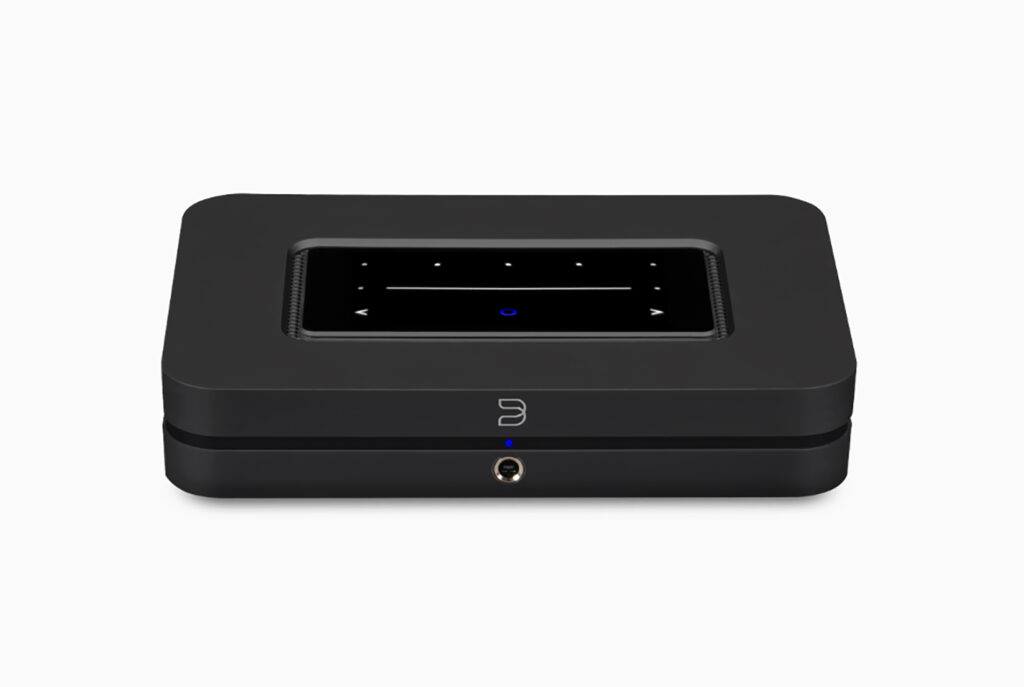
What Makes the BlueSound Node 2024 Music Streamer So Special?
- BluOS is the best music streaming software/platform in terms of user experience that I’ve used to date. I say this with literally nine Sonos Port streamers (buy at Crutchfield) in my reference equipment rack, as Sonos is the only other streaming platform that even tries to compete at the level that a mainstream consumer electronics enthusiast would want. A Sonos Port (read my review), on the other hand, doesn’t offer a digital output, thus isn’t really relevant to a serious audiophile, as you are stuck with their internal DAC, which isn’t nearly as good as the ones now inside of the BlueSound Node 2024. Sonos also “bricked” some legacy products a few years ago, which really pissed off their user base. More recently, Sonos infuriated their consumer base as well via the CEDIA channel with their beyond-poorly-rolled-out software update. I am glad to announce that BlueSound has not suffered any of these issues.
- The BlueSound Node 2024 can deliver nearly every streaming music service that you could ever want, when others, often costing many times more, fail miserably on this front. I still like the (lower-resolution) Pandora service and feel invested in it as a platform that makes the best playlists. With that said, on, say, Roon (Brian Kahn takes a deep dive in to Roon here), I can’t have a full-resolution version of Pandora. The BlueSound Node 2024 delivers on the HD players like QoBuz (my go-to option) and Tidal, as well as Amazon Music. They support nearly every other option that I’ve ever considered when other software and/or hardware platforms fall short – far short.
- My mind was blown when I learned that the BlueSound Node 2024 will have Dirac Live “ready” Room Correction included. One of the biggest reasons why Andrew Dewhirst, Mike Prager and I all use an Anthem STR stereo preamp (read Andrew’s review) in our system is its fantastic use of their Anthem Room Correction (ARC). Getting room correction into an audiophile system was pretty complicated up until this point. There was the Anthem option. NAD’s M66 (buy at Crutchfield) (Mike has one in for review in early 2025) and Trinnov’s $7,000 single-box solution were many of the best ways, but the BlueSound Node 2024 bringing meaningful, mic-measured room correction is a total game changer. Sadly, I can’t test it yet, as that feature is pending on the BlueSound Node 2024. The mic shouldn’t be too expensive, and the fees to make Dirac work on your system range from a limited license at $159 to $249 for the Full Monty. The kit including the mic will cost an additional $39.
- The number one thing that you can do to make a digital (or analog, for that matter, but it’s really important in digital) audiophile component perform or sound better is to give it a bigger-better power supply. BlueSound did just that, and audiophiles worldwide were doing backflips for joy.
- The internal DAC chipset is from Sabre, which is one of the best providers of audiophile-tastic chips used for DACs. These chips (or ones like them) are found in many of our favorite digital audiophile devices, like the Topping D90 III Sabre (read my glowing review here) and many others. This is a welcomed upgrade for those who might not have the budget to pop for an external DAC right out of the gate, thus the BlueSound Node 2024 is even more of a friendly product for new audiophiles who are on a budget.
- The BlueSound Node 2024 can now support DSD. I have some SACDs but I am not sure where they are (shhhh … they are ripped on my music hard drive), but the BlueSound Node 2024 can now handle them, which is yet another welcome audiophile perk.
- There is a THX-approved headphone option with a front faceplate jack right in the middle of the BlueSound Node 2024. Let’s face it, there are far more people into audiophile headphones than there are into pure two-channel audio. I estimate that to be about 25 times more, based on my research on search engine traffic. So, making the BlueSound Node 2024 a suitable place to plug in a one-quarter-inch headphone jack is just plain smart, and yet another reason to love this product.
- Bluetooth is upgraded on the BlueSound Node 2024, which allows for more reliable device connectivity and a more modern overall user experience.
- There are many other streaming services that you can use with the BlueSound Node 2024. Apple Airplay 2 might be the most impactful. Spotify Connect and Tidal Connect help, too.
- There is an HDMI eARC option, which could be useful for people with soundbars (even audiophiles have soundbars in some rooms of their homes). There are also optical inputs, which is unique for a component at this price – hell – perhaps at any price.
- The BlueSound Node 2024 comes in both white and black. Mine came in black, which is fine for my rack, but white looks pretty cool. You can tell a 2024 Node from the original, because of the center-located headphone jack on the BlueSound Node 2024.
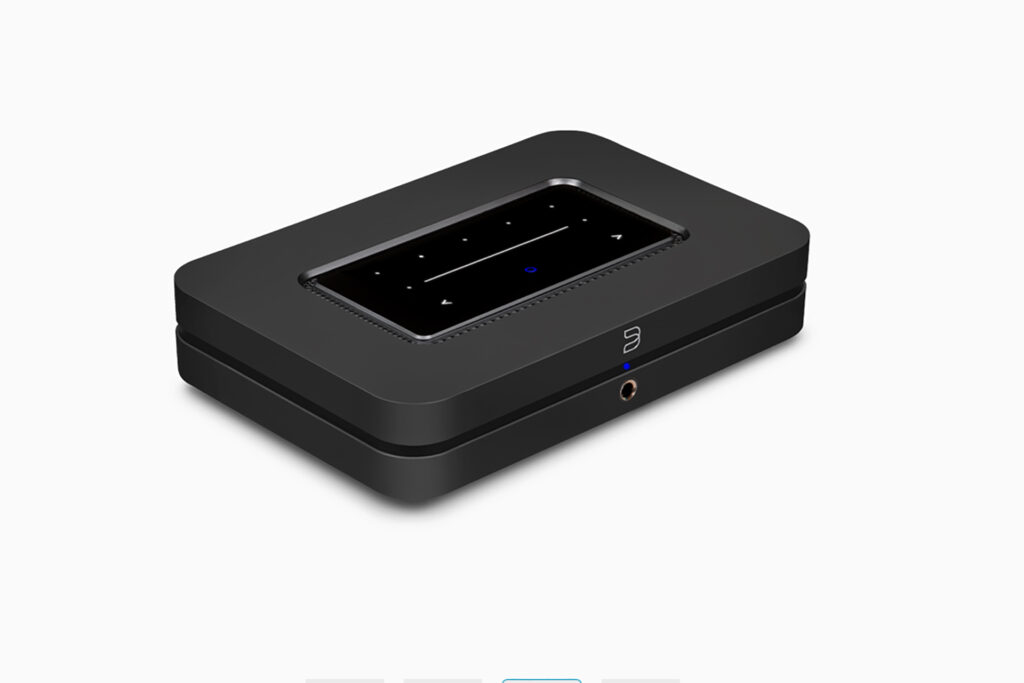
Why Should You Care About the BlueSound Node 2024?
The audiophile who is into a BlueSound Node 2024 is one who wants the most out of his or her music streaming. They respect Sonos for their operating system and ease of use, but aren’t about to use a Sonos Port as a source component in their main audiophile rig, because it lacks a digital audio output and the internal DAC is just OK-sounding by audiophile standards.
The temptation of adding room correction to your two-channel audiophile system is major. even if it makes the establishment audiophiles’ heads nearly explode. Room correction can actually measure and solve real world audio issues in your room and/or your systems, and Dirac Live doesn’t suck. If all this component did was room correction, it would be well worth the money that Lenbrook asks. The fact that it comes with room correction as just one of a handful-plus of reasons why to upgrade makes the BlueSound Node 2024 really tempting. Don’t believe me? I can send you the emails from nearly every member of my editorial staff looking to review this component. The BlueSound Node 2024 is a sought-after, to be polite, audiophile component. At its price, I know a few of my writers just bucked up for it from a retailer, as there are only so many available for reviewers and they can’t have mine back (I will pay, of course).
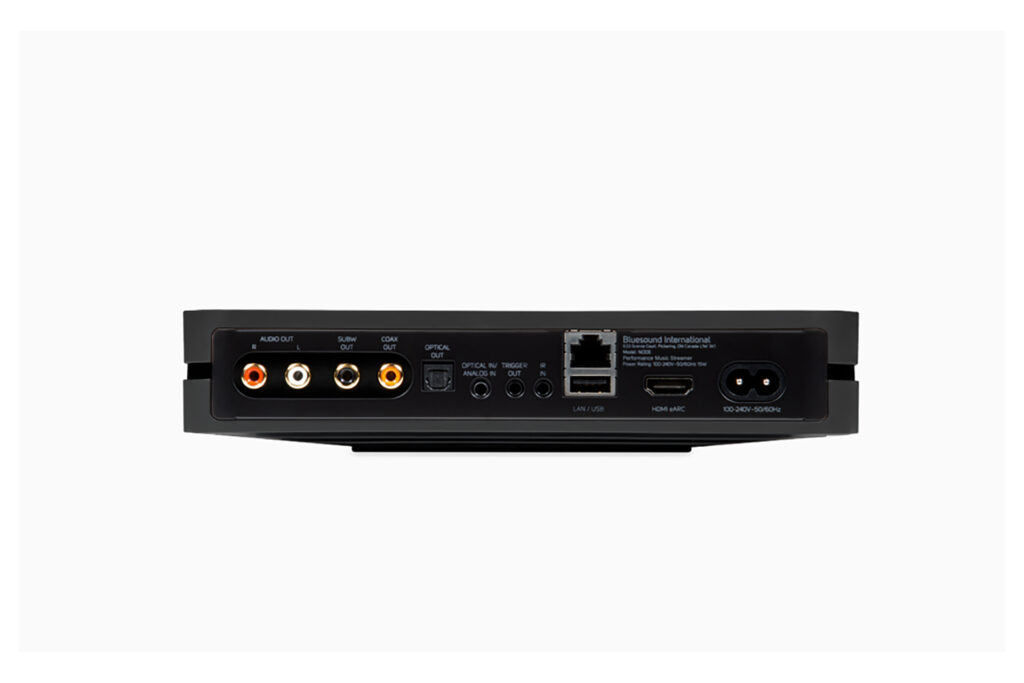
Some Things You Might Not Like About the BlueSound Node 2024
- There are many digital output options on the BlueSound Node 2024, but the two that I want most are not offered. AES-EBU is my preferred way to connect a digital product in my system (read my guide on how to pick the best audiophile digital connection here). I2S, which I believe is a Philips platform, uses HDMI for digital audio and is gaining popularity, as I saw it as an option on a recently reviewed PS Audio Stellar Gold DAC at $4,000 (read my review). I’ve spoken to my buddy who is an engineer on this project in Copenhagen and planted the seed for this concept. Perhaps we can get these features into the BlueSound Node 2026 (or what-when-ever they choose to call the next one)? I used Wireworld’s new Series 10 digital cables, which I just received for my testing.
- There is no sexy-ass LED screen on the BlueSound Node 2024. If you want an LED screen, double your budget, wait for the BlueSound Node ICON, and you are all set. I keep my BlueSound Node 2024 behind closed doors and control it with an iPad for my audiophile endeavors, thus the LED isn’t a big factor for me, but it is very cool to look at and/or engage with.
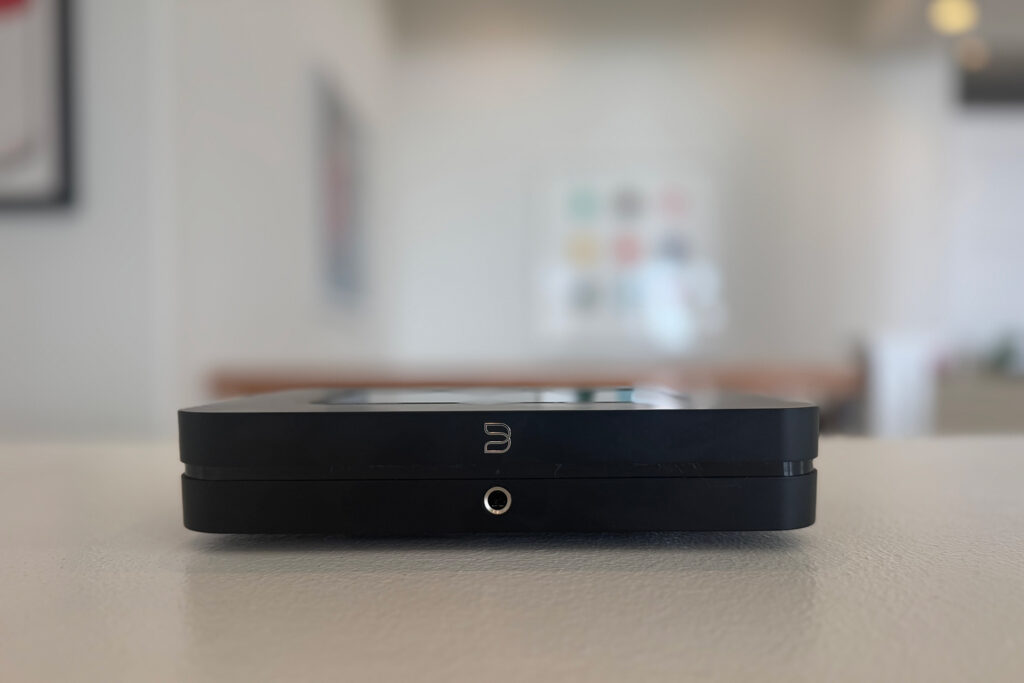
Listening to the BlueSound Node 2024 …
In 1993, I was just starting music school at USC in South Central Los Angeles. This was the same time that Snoop and Dre were making quite an introduction to the music world. While I am not the biggest hip hop or rap guy, Snoop’s Doggystyle is a classic so good that its appeal transcends its genre. “Who Am I (What’s My Name)” (QoBuz) might not be the most radio-friendly track (for language, even though it was the first single back in the day), but it features Dr. Dre as much as a performer as an iconic producer. What I was able to do with this track is to volume-match it between the BlueSound Node 2024 and the original Node and test the analog outputs (meaning the internal DAC, improved power supply). The differences weren’t sonically huge, but they were audible, as you will often find when evaluating audiophile digital products. The song is dripping in Parliament samples and the bassline sounds like the one from “(not just) Knee Deep,” which is a jam in its own right. On the BlueSound Node 2024, the bass had just a little bit more heft to it on the new unit. Was it as good as the bass when connected to my Benchmark Media DAC3 B (read the review) or my reference Bricasti M3 (read my review)? No, but those DACs are crazy expensive, as compared to a BlueSound Node 2024. Could a young audiophile live with the analog output of the BlueSound Node 2024? They absolutely could, and there is a clear upgrade path with very respectable, high-performance DACs that cost only a few hundred dollars.
During a late-night listening session at moderate to low levels (everybody in the house was asleep), I got into “Distant Early Warning” from Rush’s Grace Under Pressure (QoBuz), an album from my upbringing that I still love dearly to this day. From the chorus-laden opening chords, what I noticed most about the BlueSound Node 2024 was better resolution of detail, in this case, specifically the detail and decay on Alex Lifeson’s guitar. When the song downshifts into a lower gear and hits the accelerator right before the first chorus, you hear a little more overall coherence in the overall sound. Details are crisper, such as the snare drum hits in verse two. Overall, it just felt like you could get a little bit closer to the master tape with the BlueSound Node 2024 versus the original unit – this time connected to my $6,000 Bricasti M3 digital to analog converter.
Getting a little bit jazzier (or for a killer grocery store soundtrack), I cued up “The Girl From Ipanema” from Sinatra Nothing But the Best (QoBuz). Ol’ Blue Eyes has never sounded more smooth than with the BlueSound Node sending zeros and ones to my Bricasti DAC. I’ve already raved about the improvement in depth, but you could hear that here with a modest but worthy improvement in sound quality. The richness of the strings at about the 2:15 mark on the track was yet another example of improvement.
My wife and I listen to a number of stations on Pandora that we’ve curated over the years. Our absolute favorite option is the Thievery Corporation Radio channel. Yes, they play plenty of the Washington D.C.-based trip hop song stylists, but they also delve into pretty much every other good artist and track from the genre, which makes for a chill vibe that we like to listen to in the event that we can get the kids to bed at a reasonable time of night. On “Le Monde” from the Mirror Conspiracy album, you get a loungy, mellow vibe with a very sultry French female vocal. The heavily wah-wah pedaled guitar track was notable in my listening, as the details of this guitar part is often lost elsewhere. Is Pandora HD? Not even close, but it is a great way to bring music into your life in ways that aren’t so sonically absolute. What I liked about the BlueSound Node 2024 is that it delivered for HD feeds or HD files as much as for more standard-definition ones.
Will the BlueSound Node 2024 Hold Its Value?
The better question is: after you buy a BlueSound Node 2024, will you ever sell it? I guess there will always be new players in this space, and I’ve heard how some $2,500 endpoints and streamers can sound a modicum better than the 2024 BlueSound Node, but that’s only an incremental improvement for a 500 percent increase in price. Simply put, you will likely not be selling your Node 2024 anytime soon, but what you get for it on the resale market is likely irrelevant, as you will have consumed more than the retail price of the product from the streamer.
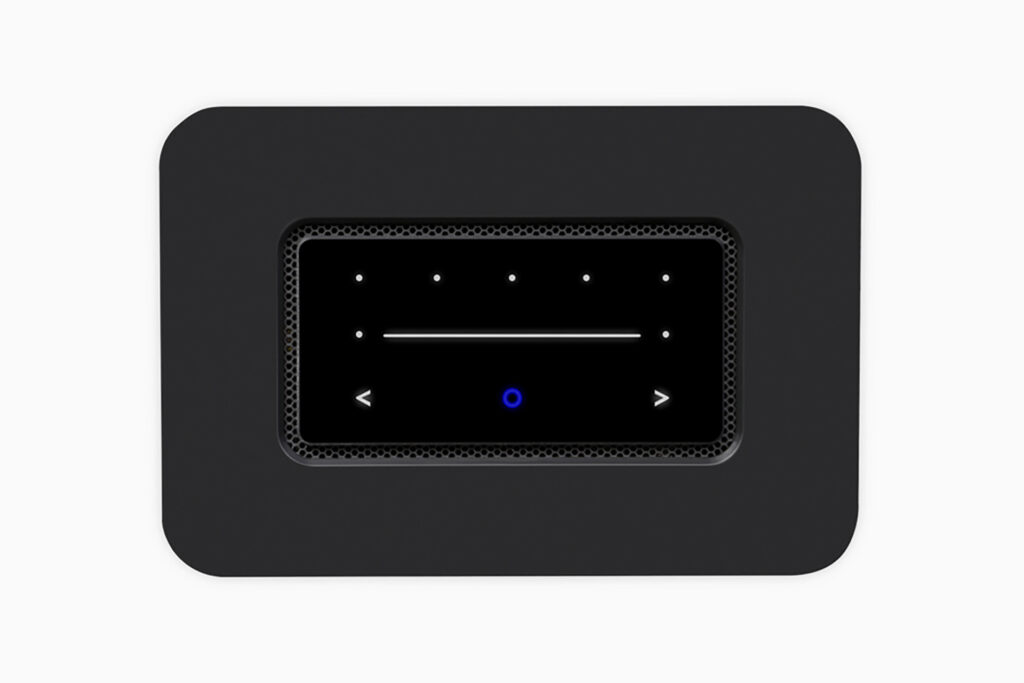
What Is the Competition for the BlueSound Node 2024?
As I mentioned before, the Sonos Port ($449 – read the review) is the best comparable in the market for the BluOS operating system, but with no digital output, the Sonos isn’t really ready for its audiophile audition – to paraphrase an old Hollywood cliché. Sonos is likely better for multi-zone connectivity, but that doesn’t mean that you can’t use a BlueSound Node 2024 for that, too.
The Bricasti M5 (read the review) at $2,500 is the first streamer or endpoint to deliver notably better sound than the BlueSound Node that I have tested. How much better is it? It isn’t a huge sonic upgrade, but it is absolutely there, and that is exactly what you should expect when you get in to the world of high-priced, higher-end digital audio streamers (or DACs), meaning incremental and meaningful improvement. The Bricasti’s performance improvements on the higher frequencies was most notable. The build quality of the Bricasti is fully superior to the Node 2024. Roon, which you can run on a Node if you like, is limited to its streaming options, but is excellent sonically and very good about meta data-based searches. Note: the Bricasti comes with no internal DAC, but does have AES-EBU outputs.
Another audiophile streamer that in-house expert Greg Handy liked was the PS Audio AirLensat $1,995 (read his review). Sold direct to consumers, this audiophile-grade streamer is expensive and good. Is it fall-out-of-your-chair good or different? No, it is not, but for those looking for a full-sized component that can perform at the highest levels, the PS Audio AirLens is a good option.
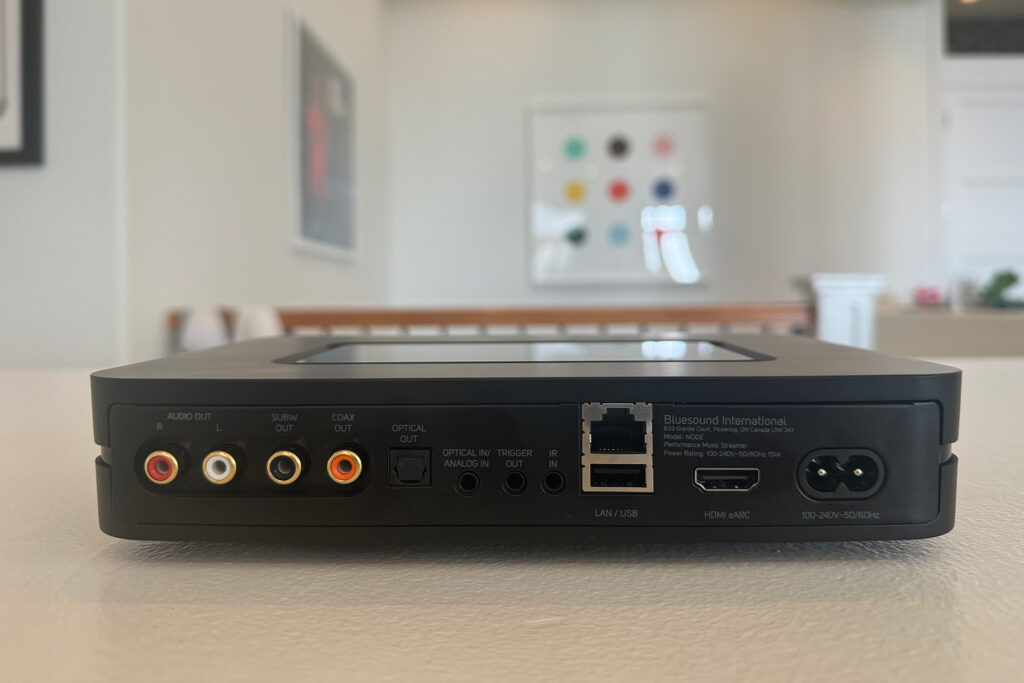
Final Thoughts on the BlueSound Node 2024 …
Like a Porsche 911, BlueSound has made significant performance improvements on an instant audiophile classic in the BlueSound Node. While there will be a bigger, more feature-laden unit coming out by the name of the BlueSound Node ICON, the current BlueSound Node 2024 is a stone-cold killer. It adds massively important features like a better power supply and specifically their pending room treatment, and delivers it for the cost of what we used to pay for a Compact Disc player in 1987.
I am not sure what audiophile doesn’t need a BlueSound Node 2024 in their system these days. Even if you are rocking a higher-end music streamer or player, you likely will want to have a BlueSound Node (Nano or 2024) in your audiophile rig. Why? Because the BlueSound Node has better streaming options, an ultra-easy-to-use interface, game-changing features and industry-leading sound. You get all of that for $549? In fact, you do. Is it crazy to plug such an audiophile source component into a DAC or preamp costing 20 times more? No, it is not. The BlueSound Node 2024 is just that good.
BlueSound Node 2024 FAQ
What is the difference between the BlueSound Node 2021 and 2024 models?
Better power supply. Better/more modern DAC chips. The 2024 has room correction. More.
Can you use an external DAC with the BlueSound Node 2024?
By no means do you have to but the interface on the BluOS is so good and they support so many more good/mainstream streaming platforms than the very high end audio models, many audiophiles chose to use an external DAC. In the case of this reviewer, he used a nearly $2,000 Benchmark and a $6,500 Bricasti M3 DAC.
What DAC chipset is in the BlueSound Node 2024?
ESS Sabre. Very well-respected.
Can you lose gain when using DIRAC digital room correction?
Yes, potentially but you can just turn the volume up to solve said issue.
Are their additional costs to use the DIRAC digital room correction?
Yes.
You need both a license (about $250) and a measurement mic ($50 and up) as well as a mic chord in the event your $50 measurement doesn’t come with a chord.




I also added the new Node into my reference system in 2024. One thing I observed if you are going to plug your television into the HDMI slot is that you will need to use the Node’s DAC for audio coming in from HDMI as chances are your external DAC cannot decode the sound properly coming in from the television. Also DIRAC Live room correction…went live yesterday for the Node, which is awesome!
Ah but have no fear, it works great with an external dac through eArc. I was skeptical as well but pleasantly surprised!
FYI: I just checked and the Sonos port does have a digital output. All the Bluesound products are better
though IMHO
Thanks for that. My older one doesn’t. That might be the issue.
THANK YOU for the comment. Very helpful, 🙂
Jerry
I use my Bluesound Node, vintage 2022, as my digital streamer. It is connected to the internal DA1 DAC on my McIntosh C49 Preamp, amplified by my MC152 with Sonus faber bookshelf speakers. Even my tired 70 year old ears can easily detect improved sound quality. It is exceptional, noticeably more open, resolved and dynamic than using the DAC on the BS node with RCA outputs. I’m considering auditioning the PS Audio AirLens, any thoughts on that.
Glad to hear your input. I have a C47 and MC 7072 driving B&W 703s. I agree, first year I used internal DAC but heard the difference using Mac DAC. My coax input craped out so I use Kimber optic to feed input now along with a CD player which is good but got lazy controlling from my phone.
The old connect from Sonos had Optical out and the new Port has Coax out.
I’ve long owned a 2nd Gen BlueSound Node 2. I’ve been happy with the software but not with the mediocre fidelity, even when bypassing the internal DAC and routing the stream out through the SP/DIF Output. I’m now considering the 2024 BlueSound Node for two outstanding but little discussed features. BlueSound states that the new Node’s USB-A port CAN be used as a digital OUT and, can do so while its subout is simultaneously used. That will allow routing the lower bass frequencies away from my bookshelf speakers, increasing mid-range clarity. I own an Intona USB Isolater which provides galvanic isolation of the USB data transfer. I then plan on purchasing the SMSL PO100 DDC & digital converter, which has a USB input and i2s output. Then on to the i2s input of my SMSL DO300EX DAC. Add in Dirac and I suspect the fidelity will challenge much more expensive digital rigs.
Can I attach an external hard drive (up to 15 TB) with audio files already loaded to the BlueSound? What connection is required? (USB?) Assuming the BlueSound is attached to an AVR, do I control music selection with my universal remote? Can I display a directory file showing all of my downloaded albums (arranged in a bespoke hierarchy of subdirectories) on my TV monitor?
I bought into the Bluesound Node a few years ago and then added the LHY Bluesound PSU bundle kit a year later.
Updated the system with an external Topping E70 Velvet Dac, and was good to go.
Can’t see anything significantly better all round at the moment and am waiting on your Node Icon review.